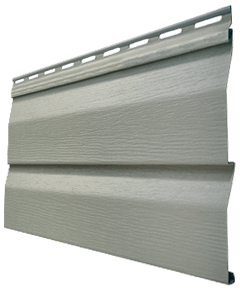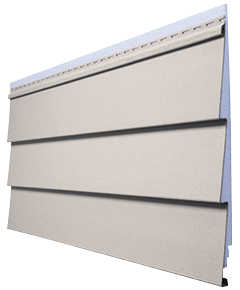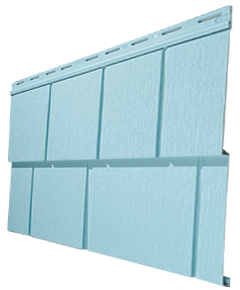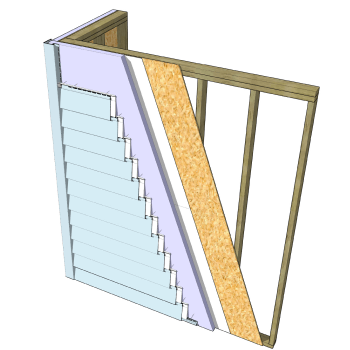Building & Code Officials
Information & Resources
North America’s Choice
Polymeric siding meets the stringent requirements of building codes across Canada and the United States, including Florida. When manufactured to the appropriate material standard and installed correctly, they meet these regulations’ demands, such as protection from the elements.
Polymeric Cladding Categories
Polymeric cladding offers versatile beauty and unbeatable strength.

Vinyl Siding
Cladding made primarily of polyvinyl chloride (PVC)

Insulated Vinyl Siding
Insulated cladding using vinyl siding combined with foam plastic insulation to produce an R-Value of 2.0 or greater

Polypropylene Siding
Cladding made primarily from polypropylene
Certified Products
As the first and only cladding product backed by an industry sponsored cladding program, with results verified by Intertek—one of the industry’s largest independent testing and certification bodies—all certified vinyl siding products are held to the highest testing and performance standards in the industry. From wind load to weatherability and fire performance, the VSI Mark represents quality and compliance you can depend on.

Energy Code Compliance with Polymeric Cladding
Polymeric claddings, such as vinyl siding, insulated vinyl siding, and polypropylene siding, are well suited for building envelopes incorporating continuous insulation. This compatibility is particularly relevant in meeting newer, more stringent wall insulation requirements set forth by the International Energy Conservation Code.
North American
Building Codes
These building codes impact polymeric cladding product performance and installation requirements for work in Canada and the United States, including Florida. These systems provide safety for single and multifamily structures and ensure cladding can withstand high winds and resist heat, cold, rain and moisture. Please note, the International Codes, or I-Codes, published by the International Code Council, provide a regulatory framework for the construction of homes and buildings and are adopted by every state in the United States.
What are I-Codes?
The International Codes, or I-Codes, published by the International Code Council, include considerations for resilient construction and safe use of cladding, as well as its role in protecting against water, wind and fire.
FIRE
Cladding may be required to be part of an assembly that provides necessary fire resistive construction, including use in high density settings and wildland-urban interface zones
WATER
Protection from both bulk and vapor
WIND
Tested and verified to meet the wind requirements for the U.S. and Canada; certain polymeric cladding is specially designed for coastal, high-wind areas
AIA and ICC Education Accreditation
Earn CEUs for credit with the American Institute of Architects as well as the International Code Council in our free courses. Become well-versed about vinyl siding's cladding properties in one of three ways: in-person, live online, or on demand. In addition, we present courses throughout the year at industry gatherings, including the Congress of the New Urbanism, Building Officials of Georgia and Ohio, and National Town Builders Association, among many others.
![]()
![]()

Code Reference Guide
Our at-a-glance, printable PDF guide provides a quick code resource for International, Florida and Canada building requirements, with installation and performance requirements, a helpful inspection checklist, and more to help you ensure code compliance.
Inspections to ensure code compliant installation
Use these quick tips for your inspections to ensure code compliant installations of polymeric cladding and soffit, especially in high-wind regions.Frequently Asked Questions
Find the information you need fast about the Polymeric Exterior Products Association's work—in advocacy, workforce training and certification, building code resources, sustainability and more—in our Frequently Asked Questions.

